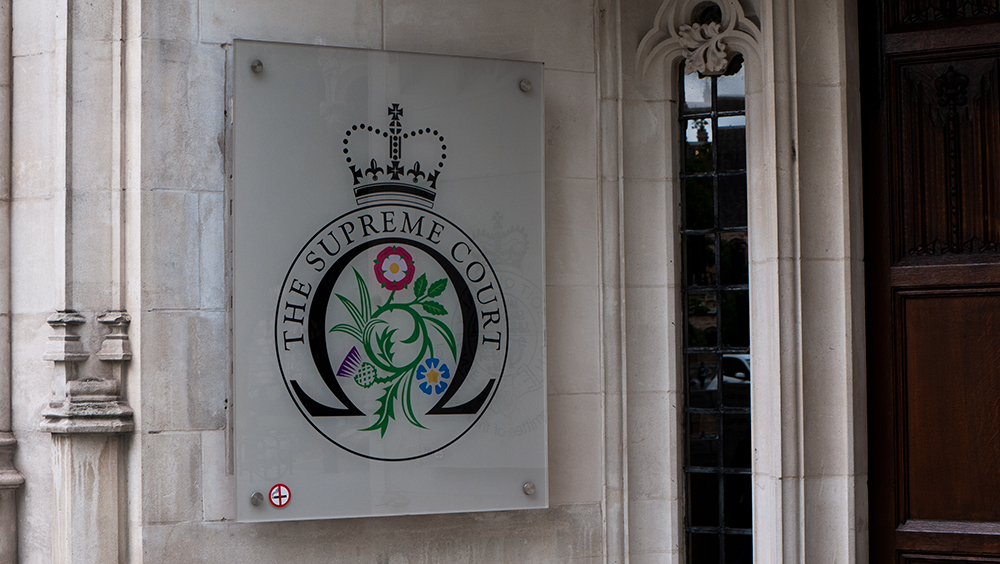Supreme Court dismisses HMRC appeal against decision that equipment at hydroelectric plant did not constitute tunnel or aqueduct

The UK Supreme Court has unanimously dismissed an appeal by HM Revenue and Customs against a decision that items constructed for the collection and transmission of water through a hydroelectric power station in Fort Augustus were not tunnels or aqueducts for the purposes of the Capital Allowance Act 2001, thus allowing expenditure on them to quality for capital allowances.

About this case:
- Citation:[2023] UKSC 17
- Judgment:
- Court:UK Supreme Court
- Judge:Lord Reed
SSE Generation Ltd constructed the items, valued at around £200 million, as part of a state-of-the-art hydroelectric scheme at Glendoe, Fort Augustus. HMRC initially disputed certain allowances claimed by the respondent for the tax years 2006 to 2012 on the basis that the claimed equipment did not give rise to allowable expenditure as provided by section 22 List B of the 2001 Act.
The appeal was heard by the Supreme Court President, Lord Reed, along with Lord Briggs, Lord Hamblen, Lord Leggatt and Lord Stephens. Timothy Brennan KC and Aparna Nathan KC appeared for the appellants and Jonathan Peacock KC and Michael Ripley for the respondent.
Transportation theme
Construction of the Glendoe power station commenced in 2006, and it fully opened in August 2012 following rectification works for rockfall damage after its official opening in 2009. The disputed items included various conduits for gathering and conveying water diverted by the main water intakes to the reservoir, the headrace which provided pressurised water to the generating equipment, and the tailrace which released spent water into Loch Ness. Uniquely to the Glendoe Scheme, many of these assets were located underground.
In considering the meaning of the words “tunnel” and “aqueduct” in their legislative context, the FTT judge considered the words had a common theme of structures related to transportation infrastructure. However, on appeal to the UT it was held that the words should be given a narrower meaning, while the Court of Appeal held that “tunnel” was limited to a subterranean conduit of a diameter and gradient which enabled it to operate as a passageway, while an “aqueduct” required to be a bridge-like structure that created a transportation route, i.e., a canal.
It was HMRC’s argument on appeal that the Court of Appeal had impermissibly inferred that Parliament, having used words of wide meaning, intended to narrow that meaning by reference to context. The correct approach was that Parliament prima facie disqualified all items in the list from being capital allowances, and any thematic connections which may be identified did not justify a limit on the meaning of the statutory words.
Specifically, HMRC contended that “tunnel” should cover any underground passage, consistent with its OED definition. There was no significance to the grouping of assets in List B and no common theme of transportation. Meanwhile, “aqueduct” was obviously capable of including conduits which conveyed water regardless of their shape, size, location, or manner of construction.
Sufficient family resemblance
Lord Hamblen, with whom the other judges agreed, said of the meaning of “tunnel”: “It is correct that [HMRC’s definition] is one ordinary meaning of ‘tunnel’. But another ordinary meaning as given by the OED is ‘a road-way excavated underground’. This emphasises the significance of a tunnel being for a way. Even the definition ‘subterranean passage’ begs the question of what the passage is for.”
He continued: “Where there is no clear, single ordinary meaning the Court of Appeal and the tribunals below were correct to consider the context and whether that assisted in identifying the correct meaning. It is clear that a different drafting technique has been used in List B (where items are grouped) and List C (where items are listed). In List B a choice has been made to identify specific structures which are to be excluded in all cases, to group those structures in separate lists and to decide the list to which each structure belongs. It is reasonable to conclude that those grouping choices were made for a reason, most obviously a thematic reason, if such can be identified.”
Turning to aqueducts, Lord Hamblen said: “’Aqueduct’ differs from the other words used in Item 1 as it specifically identifies what the way is for, namely water. That justifies a wider meaning being given to that particular term but it does not undermine the general theme running through Item 1. There is no need for complete congruity and there is sufficient family resemblance between all terms used.”
He concluded: “Conversely, if, as on HMRC’s case, ‘aqueduct’ simply means a water conduit it would be very surprising for it to be listed after ‘bridge, viaduct’ or indeed in Item 1. It has nothing in common with the other items there listed. It would also largely render otiose other water conduits that are specifically listed, such as canals, dikes and drainage ditches. I therefore consider that in context ‘aqueduct’ here means a bridge-like structure for carrying water, which includes but is not limited to carrying a canal. That is its common ordinary meaning.”
The appeal was therefore dismissed in its entirety.





